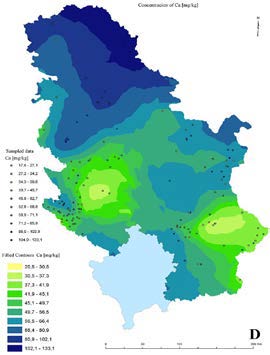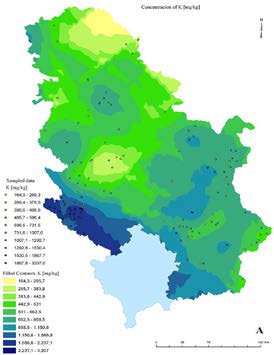Institution/Author: Faculty of Security Study, University of Belgrade/Dr Dejan Radović, Environmental Protection Agency/Slaviša Popović
Serbia has very good prerequisites for the development of beekeeping (apiculture), distinguished by heterogeneous relief and climatic conditions and by the existence of various honeybee pastures. Considering the area of wild flora, it would be possible to breed up to 800,000 bee colonies. However, disregarding this possibility, the current utilisation of capabilities is only 33.4%, resulting in annual production of 4,000–5,000 tons of honey. Honey composition is tightly associated to its botanical origin, which is closely related to the geographical area from which the honey originated. Volatile composition is very dependent on the geographical location even for the same plant species, as accumulation of phytochemicals depends on climatic conditions (sunlight and moisture), soil characteristics, and the presence of different minerals arising from soil. This suggests that the chemical composition of honey even of the same floral origin may be quite different. Due to the botanical origin given by the particular flora and the ecosystem diversity conditioned by the given territory, honey may have unique characteristics. Indeed, estimation of honey quality by consumers depends on its organoleptic characteristics, which are strongly dependent on botanical origin of the honey, and to some extent, on its geographical origin. Twelve minerals were quantified for each honey sample (K, Na, Ca, Mg, Fe, Zn, Mn, Cu, Ni, Cr, Co and Cd). Potassium was the most abundant mineral component, considering all the investigated samples.
GIS spatial distribution of K, Ca and Mg content in multiflora honey
 |  |  |
Calcium and magnesium were the next most common elements, followed by sodium, iron, and zinc. Sodium and magnesium were also present in significant amounts in all the studied samples, but several times lower than the potassium content and 2-time lower than the calcium content. Magnesium was present in higher amount in the samples coming from the Zlatibor mountain area (50 mg kg–1) than in the samples coming from the rest of Serbia (15–22 mg kg–1). The rest of the studied minerals (Zn, Fe, Cu, Mn, Co, Cr, Ni and Cd) were present in minor quantities and some of them could be detected in trace amounts (μg kg–1).










